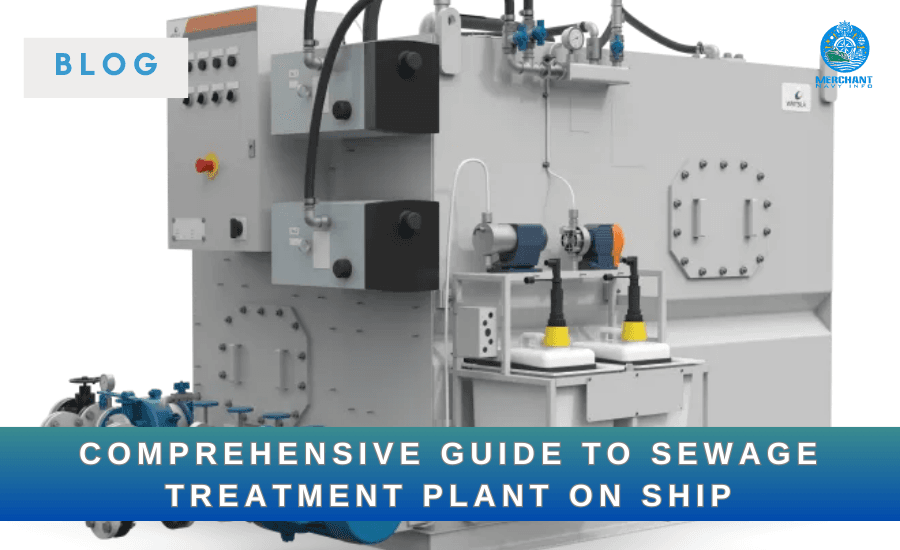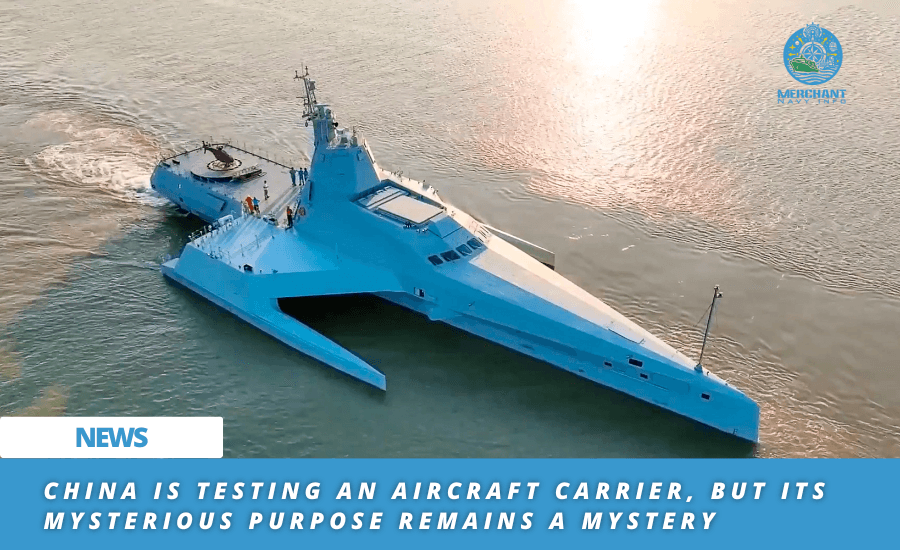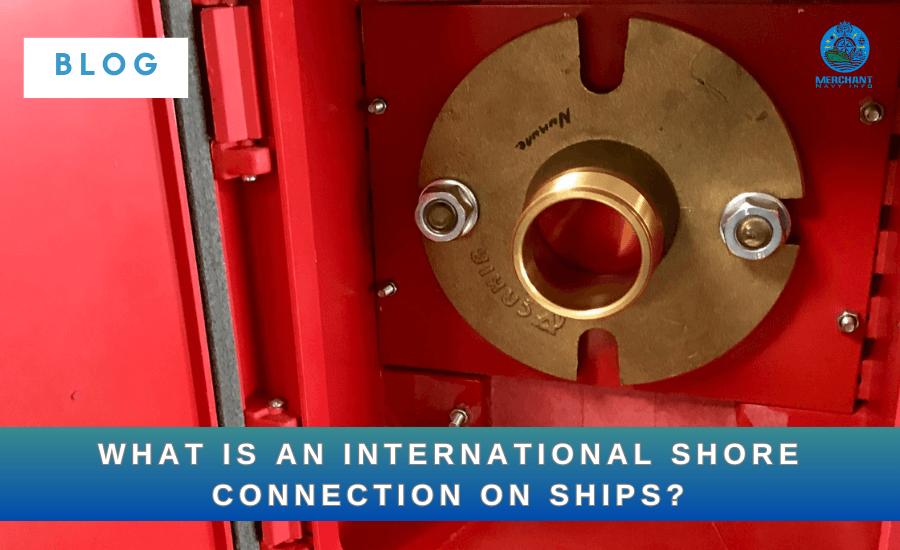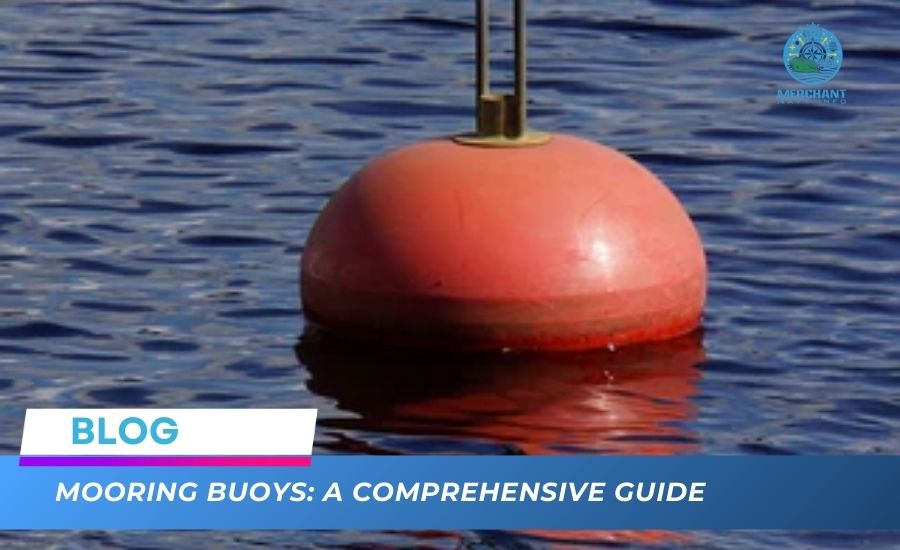
Complete Guide For Mooring Buoys
Mooring buoys are an important part of marine life. They hold vessels, such as boats, in place so that they don’t drift away.
Buoys are also important for boating safety. They determine a vessel’s location so that other boats know to avoid the area.
In this blog post, we’ll explore everything you need to know about floats, including what they are, how they work, things to consider when buying these flotation devices, and how to use them.
What are Buoys?
Buoys are floating devices that mark mooring locations and can be used to tie boats or attach other flotation devices. Buoys are also used to locate wrecks, fishing areas, swimming areas, and other areas where boats are unsafe or difficult to anchor.
Buoys are an important part of deep sea navigation and are used by both commercial and recreational boats. They are usually owned by governments or private oil extraction and shipping companies. In some cases, individual floats are available for public purchase.
Buoys are usually larger and heavier than other buoys, such as those used for navigation. This is because the buoys must be able to hold boats in place in all weather conditions, tides, and currents.
Why do ships dock with buoys? (Practical Uses of Mooring Buoys)
Buoys are attached to the seafloor and connect boats and ships. But why do ships moor to buoys? It turns out that floating has some important benefits.
Buoys provide a stable platform for ships to use as mooring points in areas without natural anchorage.
These floating devices are also used to dock ships during the construction of offshore oil platforms and provide a mooring point for small boats in areas with strong currents.
Buoys often anchor ships in open waters away from coral reef areas. Coral reefs are fragile ecosystems that can be easily damaged by ships and ship anchorages. By securing ships to buoys, we can help protect these fragile reefs.
Ships anchored near sensitive coastal areas can cause erosion. By securing these ships to buoys, we can help reduce the environmental damage they cause.
In short, buoys are important for protecting the environment and water-based vessels that use our waterways.
Design of buoys and how they work
Want to know what floaters look like? Here is a brief description of these flotation devices:
Buoys, which weigh several tons, are usually made of heavy plastic, steel, or concrete. They have a large central chamber filled with buoyant materials such as polystyrene to keep them stable in the water.
These buoyancy devices are equipped with strong tethers (ropes or chains) to connect the vessel to the buoy and hold it in place. Buoys are designed to withstand the forces of waves, wind, and the vessel’s weight.
Buoys are designed with special materials proven to withstand the elements and the forces of the water. For example, the exterior materials are usually UV stabilized to resist UV degradation. In addition, galvanized metal parts are used to prevent corrosion.
Buoys are also brightly colored, so they are easy to see.
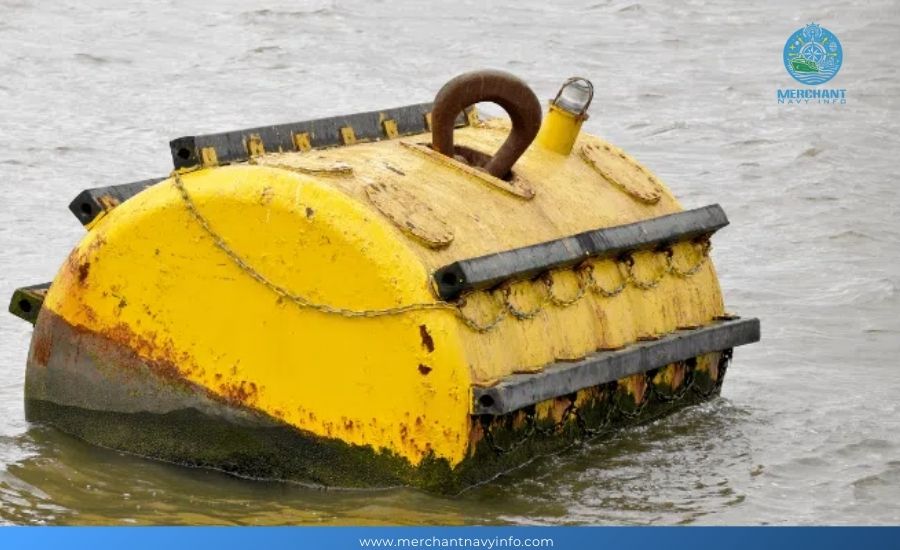
How to Choose a Mooring Buoy for Individual Applications?
Buoys are an excellent, environmentally friendly way to anchor your boat. But how do you choose the right buoy for your boat?
When choosing a buoy, consider the weight of your boat, the accessories that need to be installed, the type of anchor line, the height of the desired focal plane, the material the flotation device is made of, and the depth of the water.
The Weight of Your Boat
The weight of your boat is the most important factor to consider. The heavier your equipment, the larger the mooring buoy you will need. Check out the weight recommendations for the buoy you want to invest in here.
However, always have a large and sturdy buoy to secure your boat.
Mounting accessories
The accessories you need to install will also affect the type of float you need. For example, if you need to install an anchor, chain, and rope, you will need a buoy that supports the installation of all of these accessories.
The type of binding wire you will use
There are two main types of binding wire: chain and rope. Chains are more durable and last longer, but they are also more expensive. Ropes are also more expensive, but they are not as durable and are more likely to break.
Required Focal Plane Height
Finally, the height of the required focal plane will also affect the buoy you choose. The focal plane height is the minimum height that the buoy must be able to float to provide adequate support for the mooring line.
The height of the required focal plane will vary depending on the type of mooring line used and the depth of water in which the buoy will be deployed. Again, each factor will have recommendations for you to refer to and make the right decision.
Floats are typically made of polypropylene, nylon, or HDPE plastic. Whatever material you choose, ensure it is well protected from the harsh outdoors and water.
Water Depth
The water’s depth will determine the float’s size and weight. Generally speaking, the deeper the water, the larger and heavier the float.
Choosing the right buoy is an important task. A faulty buoy could cause your boat to break free of its mooring, which can have expensive and dangerous consequences. But if you follow the above recommendations, you can find the perfect buoy for your needs.
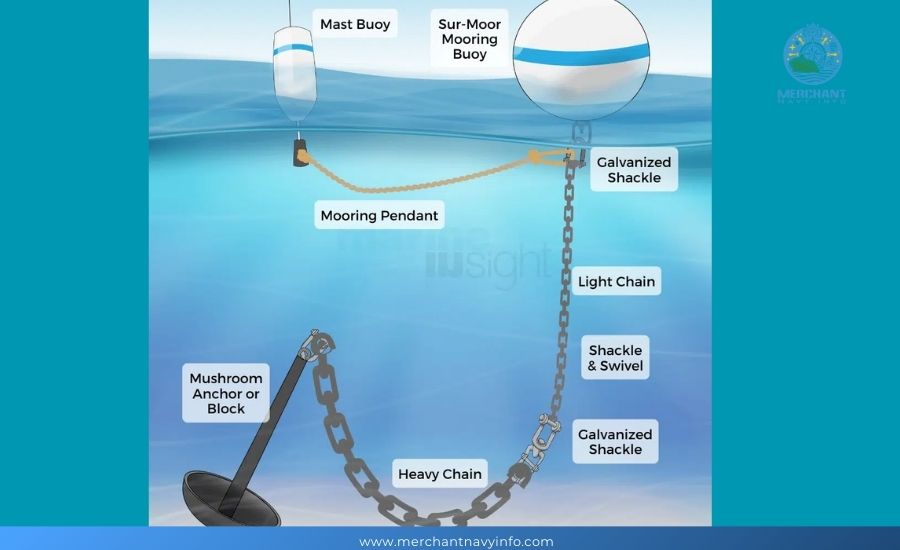
Buoy Installation
To install a buoy on government-owned waters, you must first obtain permission from the relevant government agency. The steps vary from region to region but generally involve submitting an application and paying a fee.
The agency must determine that the proposed mooring will not be hazardous to navigation or the environment. The appropriate agency will only allow the installation of mooring buoys in areas that do not interfere with other waterway uses.
Once you have obtained your permit, you must purchase the buoy from a supplier. Make sure the buoy you choose is durable and can withstand inclement weather.
Once you receive the buoy, you must install it in the water. The installation process will vary depending on your buoy type, but you may need to do some drilling and welding.
When installing the pontoon, you must ensure it is securely installed and properly maintained. As the owner of the buoy, you must ensure that the mooring will not be a hazard to navigation or the environment.
How to use a buoy
If you are new to boating, you may wonder how to use a buoy. You should follow these steps when using a buoy to anchor your boat effectively:
Choose the appropriate buoy size and type for your boat. Then, approach the buoy from the windward side, keeping the helm on the same side for a clear view.
Find the mooring line connected to the buoy. This line will be used to anchor your boat using the bow line.
Advice:
Make sure all buoy lines are clean and free of debris. Otherwise, use another buoy.
Before getting too close, make sure your boat speed is under control.
How to catch a buoy
You can catch a buoy using several different techniques.
The most common method is to catch it with a boat hook. Once you have caught the buoy, you can pull it closer to your boat with a rope.
Other ways to raise a buoy include using a hook or a pair of poles.
Intricate Dynamics of the Busiest Shipping Route
Tip: No matter which mooring line lifting method you choose, always approach the buoy carefully and have a plan before attempting to raise the buoy.
If you are new to boating, you may wonder how to use a buoy. You should follow these steps when using a buoy to anchor your boat effectively:
How to grab a buoy
You can use several different techniques to catch a buoy.
The most common method is to catch it with a boat hook. Once you have the buoy, you can use a rope to pull it closer to your boat.
Other ways to catch a buoy include using a grappling hook or a pair of rods.
Tip: No matter which method you choose to grab a mooring line, always approach the buoy cautiously and plan before trying to grab it.
How to tie a boat to a buoy?
There are many ways to secure a boat to a buoy, but the key is to use a method to maintain the boat’s integrity in all outdoor conditions.
The figure eight knot is the most common method for tying a boat to a buoy. This knot is easy to tie and is very strong, making it ideal for securing a boat.
To tie a figure eight knot:
Start by threading the mooring line through the buoy hole.
Next, make a loop in the rope and wrap it around the buoy.
Next, pass the rope’s end through the loop and pull tight.
Finally, tie an overhand knot at the rope’s end, and you’re done!
Tips:
Hold your boat in a neutral position while attaching the buoy rope to the bow rope to avoid tangling.
Avoid attaching the buoy rope directly to the boat, as this will stress the buoy more.
How to unhook a boat from a buoy?
Here are the basic steps to unhook or release a boat from a buoy:
Make sure the area around the boat is clear, and there are no other boats or objects nearby that could cause a collision.
Find the clip, knot, or connector on the buoy line and release it from the boat.
Maneuver the boat away from the buoy.
If necessary, secure the boat to another buoy.
Tips to consider when approaching and using buoys
Check the weather forecast before setting out. If it shows strong winds or large waves, it is best to avoid going out to sea.
Before leaving the beach, make sure you have all the necessary safety equipment, including life jackets, flares, and whistles.
If you are unsure of what a particular float means, it is best to avoid it.
If you must approach a buoy, always be careful and slow down.
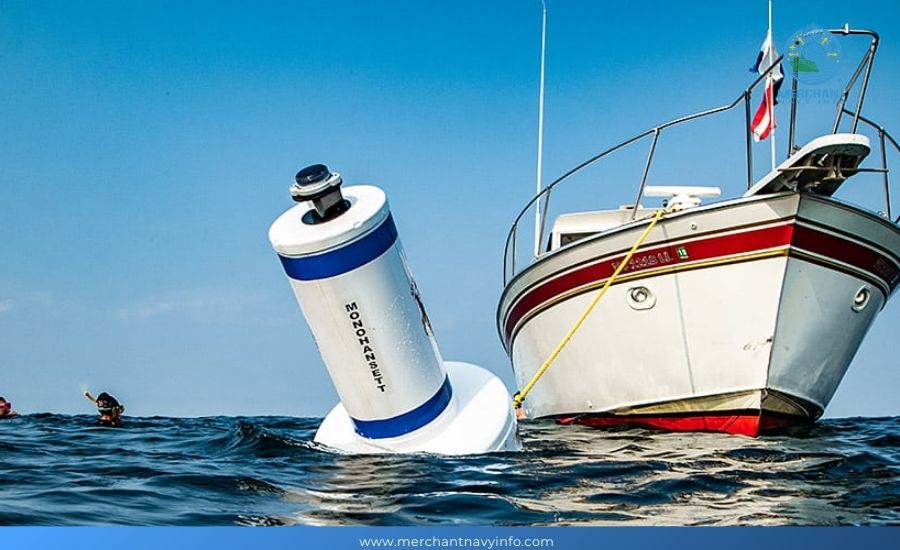
Keep a long distance from the mooring line to ensure the boat does not sink under the water.
Set up a lookout point and be prepared to stop if necessary.
Check the line regularly to ensure it is secure. Report any problems to the appropriate refuge office.
Terms of use of paid state buoys
You must purchase a float permit if you are not using a free float.
A float permit allows you to anchor your boat at a specific location for a specific period. This permit allows you to tie your boat to a buoy in an approved area and pay an annual fee.
The annual ship float permit fee is mainly based on the vessel’s length. The longer the boat, the higher the rate.
For example, a 30-foot boat will pay a $100 fee, while a 40-foot boat will pay a $200 fee.
FAQ
What should you avoid when approaching and using a buoy?
There are a few things you should avoid when approaching a buoy.
First, don’t approach a buoy from the side or behind, as this can cause the mooring line to sway and catch you off guard.
Second, don’t try to secure yourself to a buoy from a distance; always approach it slowly and carefully so you can see what it’s doing.
Finally, ensure your boat is secured before leaving, as an unsecured boat can come loose and cause damage to your pontoon or other boats.
What do the colors of buoys mean?
Floats come in a variety of colors, and each color has a different function.
Yellow buoys indicate dangerous areas or areas where there is no safe passage.
Red buoys indicate buoys you should approach and pass from the left.
Green buoys indicate buoys you should approach and pass from the right.
Black markings or letters on a buoy mean the site is restricted and cannot be used. The black color also indicates where the buoy is dangerous.
White and orange diamond markings on the buoy indicate where hazards such as rocks are located.
What is the biggest advantage of buoys over traditional anchors?
Traditional anchors are made of heavier materials and are more likely to dig into and uproot corals below the water surface.
To prevent this damage, newer, more efficient floats float on the water’s surface and use suction to stay in place.
These buoys are less likely to cause damage to sensitive marine ecosystems.
In summary
Buoys are a great way to keep your boat safe. They are easy to use and provide a high level of safety.
This guide details floats, their benefits, and how to use them. If you are considering buying a float, do your research and follow our advice to find the best option for you and your needs.
Understanding how floats work and when to use them will ensure the safety of you and others on your boat or other vessels.

